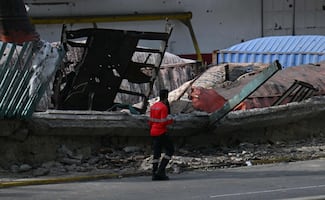Más Información

Cae en Nayarit operador financiero de "El Mencho"; detienen también a jefe de plaza del CJNG de Tlajomulco

Ricardo Salinas mantiene su pulso con el gobierno de México; denuncia en la OEA persecución política
A total of 107 journalists have been killed in Mexico in the last 15 years, according to the latest report of the National Human Rights Commission (CNDH).
The Special Prosecutor for Crimes against Freedom of Expression (FEADLE) reported 103 murders of journalists, but it does not reveal the names of the victims arguing that the investigations are ongoing.
EL UNIVERSAL revised the statistics of the Committee to Protect Journalists (CPJ), that reported 40 murders from 2000 to 2015, with the 88 journalists reported killed by Article 19 and the NGO Periodistas de a Pie y Nuestra Aparente Rendición.
The results showed that out of the 88 journalists identified, 35% covered issues related to police and public safety, 23% drug trafficking and 23% politics, 17% had no specific source and 2% covered socials.
Apart from working as communicators, 11% of the journalists killed were social activists.
The analysis also revealed that 94% of the victims were men and that 64% of the murders, i.e. 56 cases, happened in five states: Veracruz (18), Tamaulipas (12), Chihuahua (10), Guerrero (8) and Oaxaca (8). Other states with high numbers of journalists killed are Sinaloa (5), Michoacán (4), and Sonora, Durango and the State of Mexico, with three each, while in Veracruz, the figure shot up in 2011, one year after the governor Javier Duarte took office, going from one homicide in 2009, to four in 2011 and five in 2012.
Six out of every 10 journalists were killed by firearm. In 68 cases, journalists were killed on the street, 16 in their house and four in their office.
Luis Daniel Vázquez, researcher at the Latin American Faculty of Social Sciences (FLACSO-Mexico), said the vulnerability of reporters and human rights advocates in the country can be attributed to the weakness of the mechanism created to protect them, managed by the Ministry of Interior.
He added that “some municipal governments have been taken by organized crime, so when a reporter receives threats and goes to the Public Prosecutor's Office to denounce it, he is in real trouble.”
Eduardo Guerrero Gutiérrez, consultant on security issues, explained that the relationship of journalists with organized crime is different in each region.
“While in Tamaulipas and Veracruz it is completely hostile and tense, in Sinaloa some cartels provide information about their enemies to the media to weaken them or facilitate their arrest.”
He added that "journalists are essential for criminals, because they constitute a way to send messages and promote their activities and intimidate. In the case of Tamaulipas and Veracruz, newspapers avoid publishing certain information because they have been attacked several times, while in Ciudad Juárez newspapers take the risk.”
Noticias según tus intereses
[Publicidad]
[Publicidad]












